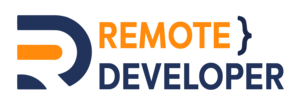More and more tech companies continue to embrace remote work. As such, remote developers must adapt and leverage remote software development tools and technologies. These will help them maintain their productivity and ensure seamless collaboration, regardless of where they work.
In this article, we will look into the remote software list of tools and technologies you need to have to help you in your next software project.
What are the Pros and Cons of Remote Software Development Tools?
More IT companies are shifting towards remote work or at least a hybrid setup. Consequently, remote software development tools have become increasingly prevalent in the tech industry.
However, the use of remote software development tools does have its advantages and disadvantages that are worth noting.
Advantages
- Flexibility — Remote software development tools enable developers to work anywhere at any time and at their convenience. They can work at their most productive hours while maintaining seamless collaboration.
- Save on Costs — IT companies can save on rent and utilities with a remote work setup and still deliver high-quality software products.
- Improve Collaboration — Remote software development tools can assist developers that will foster better collaboration and communication. It can save time spent on meetings and focus more on the development aspect.
Disadvantages
- Challenges with Communication — Even with remote software development tools, communication can still be challenging since remote developers are far from each other.
- Security Risks — Using remote software development tools with unsecured internet connections can increase the chances of data breaches and other security risks.
- Dependency — While remote software development tools can be a big help, they can also be the reason for project delays due to malfunctions and even connection issues.
Top 11 Remote Software Development Tools
With these in mind, here are the top remote software development tools that will help you and your team with your software project.
Slack
Slack is a remote communication tool that allows you to share messages and documents through chat rooms. It is easy to integrate which provides your team an efficient avenue for communication and collaboration.
Moreover, its features make it easier to organise teams and make things like messages, notifications, and files searchable. Plus, it also has robust 3rd-party integrations like Github, and even continuous integration tools, like TravisCI, Jenkins, and other open-source software development tools.
All in all, Slack is a highly flexible communication tool and allows you and other remote developers to communicate in channels that are separated by teams, projects, and tasks.
Screenhero
Screenhero is one of the best remote desktop software tools for real-time collaboration and screen sharing. It is a great tool for those that usually do remote pair programming.
The way it works is that it allows teams to talk, and members can take control of other team members’ computers, enabling effective and real-time collaboration. In addition, you can invite multiple users to join an ongoing session for one-to-X collaboration.

Trello
Trello is a project and milestone management tool. It helps remote developer teams to stay organised and on track. Moreover, every team member that is part of a Trello board can see what is going on and stay informed of the software project’s status.
In addition, Trello can integrate with Slack and it also has user-friendly APIs that developers can quickly learn. Its features and design make it one of the easy-to-use software development collaboration tools.
Jira
Jira is one of the handy remote software development tools. Teams can plan and track tasks. In addition, its features enable you to create new user stories, plan sprints, and assign tasks to team members to keep everyone accountable.
Jira is especially helpful during the development and testing stage since it can be used for bug tracking. Moreover, its reporting system is transparent, ensuring every member is on the same page.
GitHub
GitHub is a cloud-based platform with a plethora of features. It is usually a go-to testing tool because it enables remote developer teams to store, test, share and collaborate on remote software projects. The way it does this is by providing developers with a place to share, edit, and build on each other’s code.
Bitbucket
Bitbucket, formerly known as Stash, helps remote developer teams to maintain their productivity while working with Git. Git repositories can become difficult to manage and can get confusing. This is solved by Bitbucket since it provides an intuitive and user-friendly interface to organize them.
In addition, it also serves as a platform for planning, code collaboration, testing, and deployment, which makes it a good alternative to GitHub.
Basecamp
Basecamp is a project management tool for your remote team. It has been around since 1999, making it a reliable software solution for productivity and collaboration, so it is worth considering.
In addition, it is considered one of the best remote software development tools since it brings together all the things you need for a project in one place, this includes group messaging, file sharing, and scheduling, to name a few.
Cloud9
Cloud9 is one of the remote software development tools that make coding a breeze. Basically, it enables you to develop your code from any mobile device since it is in a cloud-based environment. This also makes it easier to collaborate with other software developers on the same project from anywhere in the world in real-time.
In addition, it comes with a full Ubuntu development environment. So it supports multiple programming languages such as Python/Django, Ruby/Rails, and NodeJS. You can also pair with popular repo hosting services like GitHub and Bitbucket as well.
InVision
InVision makes prototyping a lot easier. This is one of the remote software development tools that are trusted by big players such as Airbnb, Amazon, Lyft, and Netflix.
With its interactive whiteboards and design tools integrated into the platform, InVision is a great tool that aids you and your remote developer team to collaborate on designing and prototyping software projects. In addition, it can also integrate with popular tools like Jira, Slack, and Basecamp as well.
Dropbox
Dropbox is one of two popular remote software development tools when it comes to file sharing. You and your remote team can share anything, such as documents, photos, videos, presentations, and even software files.
Google Drive
Last but not least, Google Drive is a staple for any software development tools list. Much like Dropbox, it is also a cloud-based file-sharing platform. However, what sets it apart is that the shared files, like documents, spreadsheets, and proposals, can be edited simultaneously in real time by multiple users.
Final Thoughts
In conclusion, the transition to remote work has changed the way we work, communicate, and collaborate. While this is a big boon for most businesses, it can be challenging. This is especially true for remote software development teams since they deal with the complexities of planning, developing, and testing a software product.
Luckily, remote software development tools can be leveraged to bridge the challenges posed by remote work. In addition, with the right tools and proper onboarding, remote teams can achieve the same level of productivity while enjoying the flexibility and autonomy that remote work offers.
We supply tools to your resources when you hire with Remote Developer. Contact us today to get started!

